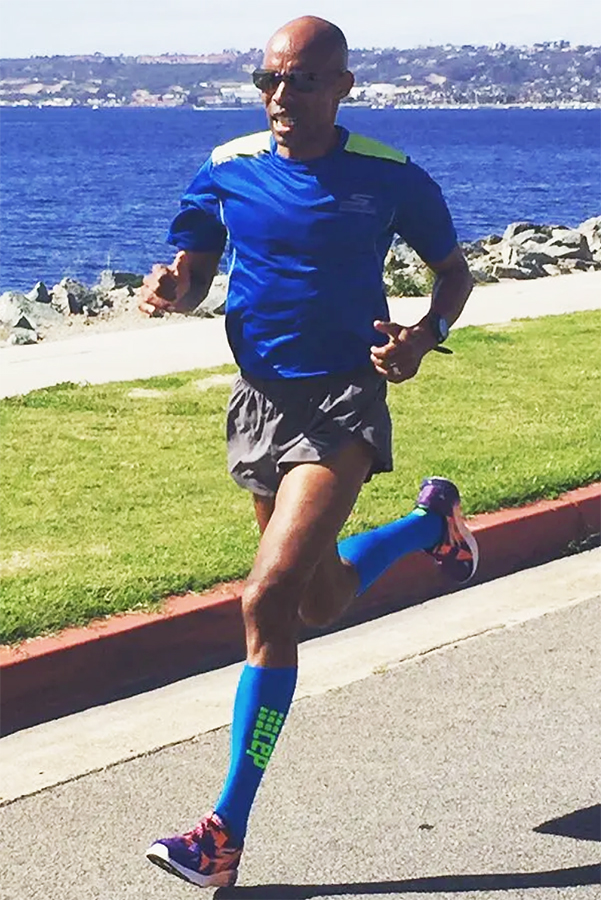 CEP Compression recently launched the 3.0 version of the brand’s compression 2.0 sock worn — and relied upon — by Olympian Meb Keflezighi one of the world’s top athletes.
CEP Compression recently launched the 3.0 version of the brand’s compression 2.0 sock worn — and relied upon — by Olympian Meb Keflezighi one of the world’s top athletes.
Backed by scientific studies and third-party testing, CEP’s 3.0 compression sock offers real graduated compression with more than six miles of engineered thread to enhance blood circulation, stabilize muscles and joints, and speed the recovery process.
The 3.0 sock’s 16 different yarns make the product softer, more comfortable, and easier to put on. The sock is also uniquely engineered to keep the body cool on hot days and warm during cold days.
We sat down with Luke Rowe, Senior Vice President, CEP Compression Sportswear, and long-term user of CEP compression socks, to learn more about the latest 3.0 sock technology from the brand and why compression is trusted by athletes and health care professionals.
—•—
SGB | Compression is sitting in a category that has been fueled by trends and not necessarily by purpose. LR | CEP has invested time and resources identifying the purpose and the reasons why someone should wear our compression products.
Most of the product on the market labeled compression is not. CEP compression is trusted because it is governed by the same rules as our medical sister company Medi USA.
At CEP we are inspected by the FDA, and we are required to have third parties verify the product claims we make. Most of our competitors do not have to prove their claims because there is no industry standard in athletic compression as there is in medical-grade compression. And to be medically reimbursed, you have to hit a standard. Moreover, CEP products are reimbursable because we meet the minimum standard of 20-to-30 millimeters of mercury in our graduated compression. The unit of measure for blood is millimeters of mercury.
SGB | CEP has not updated its core styling in almost six years, yet the brand does very well and the 3.0 version has been well received at retail. LR | Our product is so well made that it does not wear out. We claim 180 washings, but I still have compression socks that I purchased in 2008! That said, if you do not update the design/construction, you’re in trouble.
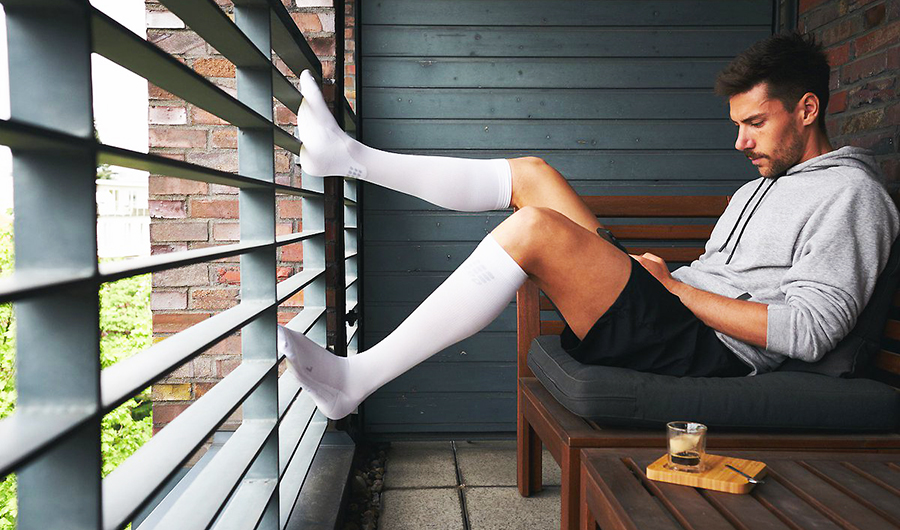
Our 2.0 product was difficult for most customer’s to put on who are not athletic. With our 3.0 sock, the 16 different yarns help make the product softer, more comfortable and easier to get on. The sock is also uniquely engineered to keep the body cool on hot days and warm during cold days.
CEP compression socks are durable and have more depth of color, including Black and White, and every sock is made by computer so at any time you can pull a sock off the production line and the characteristics are exactly the same. Sell-through results for the 3.0 compression socks have been outstanding. We’re sitting at 35-percent positive for the quarter which is the first time we’ve been at that level since we entered the category 11 years ago.
Retailers understand that they don’t need to carry a wide range of products and they chose to put their resources on CEP because of the quality of the product, that CEP can verify the claims we make, and results show when people get wear CEP compression, they don’t switch back.
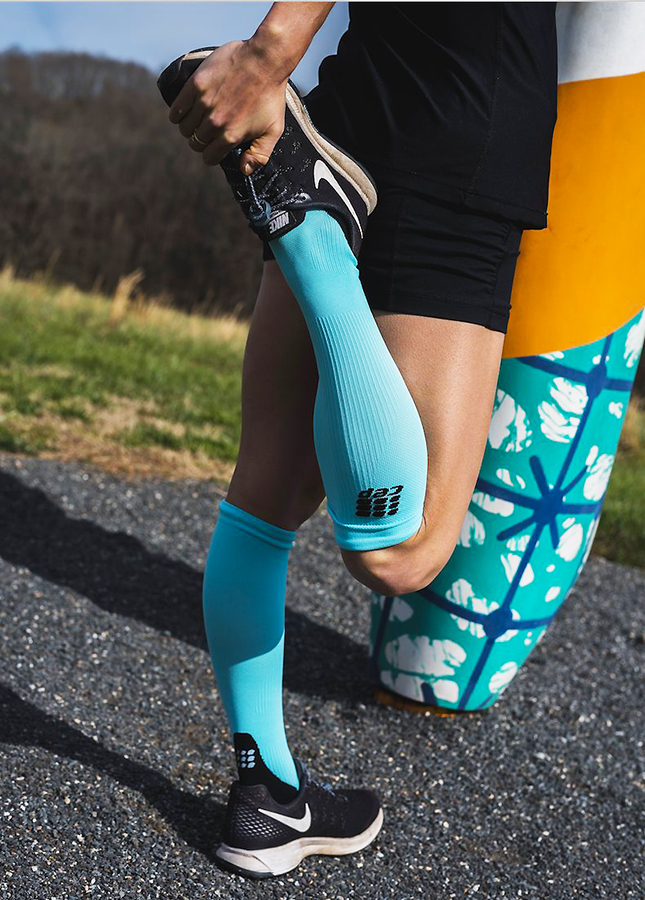 SGB | Meb Keflezighi has been an ambassador for CEP for many years. LR | Yes, he wears our compression-grade product because he likes it and because in wearing it he can help us improve the brand. We went from 1,000 ambassadors a few years ago to a core group of fewer than 100 people whom we believe are capable of contributing to the brand.
SGB | Meb Keflezighi has been an ambassador for CEP for many years. LR | Yes, he wears our compression-grade product because he likes it and because in wearing it he can help us improve the brand. We went from 1,000 ambassadors a few years ago to a core group of fewer than 100 people whom we believe are capable of contributing to the brand.
SGB | What is the foundation of the CEP brand? LR | Credibility. Once you put our product on, you feel the difference. We see this regularly at retail and the events that we attend. People tell us that they tried compression from competitor brands and it didn’t work. It wasn’t until they wore CEP that they understood the benefits of compression.
The reality is that most compression is not made properly. If it’s not graduated correctly, the blood pools in the foot, and that’s the opposite of what should happen. Graduated compression should be augmenting the venous return.
Blood is not continually flowing; it goes from valve to valve, a push, push, push. Most adults have deteriorating vein systems and are not capable of driving the blood back to the heart. And athletes, especially young athletes in their prime, use their bodies to such an extreme that they can’t get the blood as clean as they want so fatigue and other conditions set in.
Graduated compression works with the valves and the veins to prevent backflow, and keeps the blood moving faster back to the heart. There are a lot of medical studies that support this. We also have athletic studies supporting this based solely on same day performance testing.
Compression allows you to train at a higher level of intensity more frequently which enables the wearer to perform better and recover faster. Compression does not stop your limbs from hurting or feeling fatigued. The real benefit is later in the day. You can walk around having recovered faster, and the next day you don’t feel nearly as beat up.
SGB | Are there studies that show that if youth athletes wear compression during training vein and capillary strength is increased? LR | No studies have been performed to date, most have been center around the benefits of compression for it’s stabilizing factors, swelling, or edema where compression can reduce those.
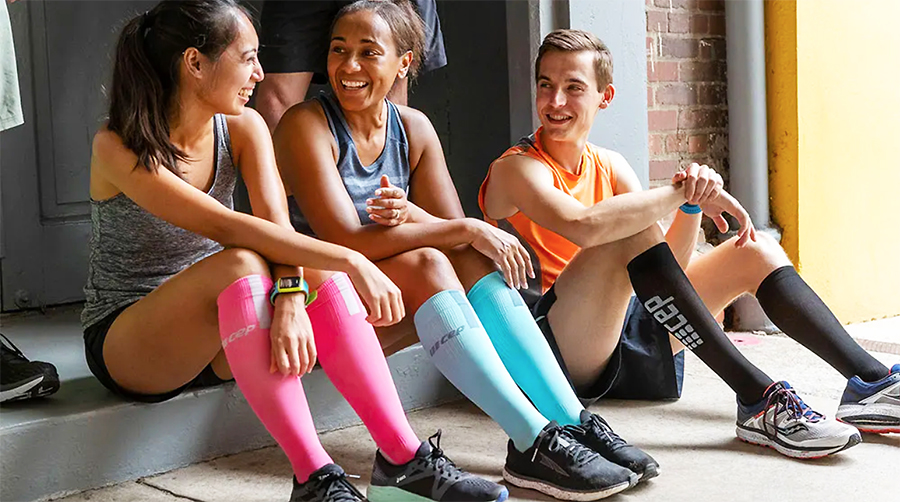 Compression has a dual life. There is compression that stabilizes – that’s the primary benefit for the younger athlete. Then there’s the warming and relaxation of the muscles. Compression also eliminates impact bounce or shock that happens to the body when the foot lands during play which, on average is three-and-half times body weight.
Compression has a dual life. There is compression that stabilizes – that’s the primary benefit for the younger athlete. Then there’s the warming and relaxation of the muscles. Compression also eliminates impact bounce or shock that happens to the body when the foot lands during play which, on average is three-and-half times body weight.
The younger athlete benefits more from the stabilizing factor when wearing compression. Conversely, when a young athlete wears a garment that offers no graduated compression, the opposite effect occurs from a blood flow perspective. If too tight at the knee, blood will pool in the lower extremities when what is needed most is to move the blood moving away from the area.
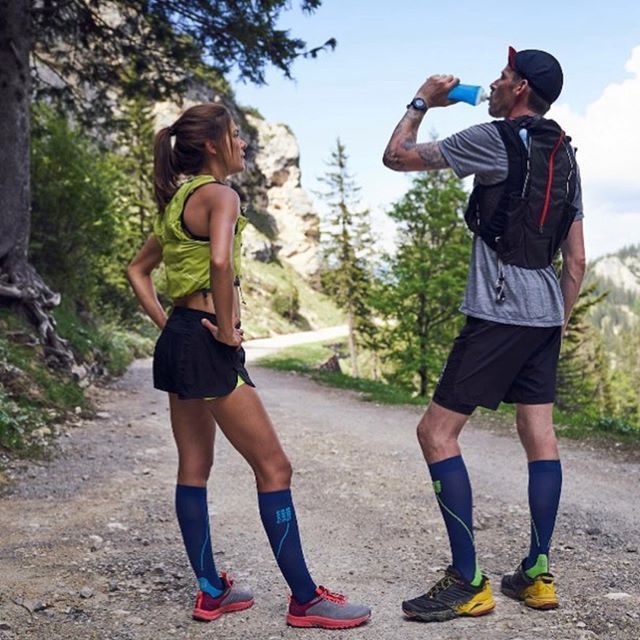
SGB | If you have never worn a compression sock how do you know what sock to buy? LR | From an athletic perspective you want to wear a high sock when you are engaging in an activity that is more endurance oriented. For example, if you’re a runner, and you run 10 miles/day, you’re going to want to feel as good on the first day you ran 10 miles as the second day. However, if you are someone who never engages in physical activity and is starting a program, your legs will fatigue faster, that’s where you would do best to wear tall graduated compression products.
It’s also good to have a variety of different sock heights in your compression arsenal that marry with your training goals.
CEP compression socks offer a firmer fit sock than competitor compression sock brands, but there’s room in your sock drawer for both without creating a massive conflict because each has a purpose. Also, there’s a reason why wearing a specific sock height of graduated compression over another at different points of your training is good.
SGB | What is a compression thread? LR | One that is flexible but also consistent at a certain level of compression. The Hohenstein Institute in Germany tests the threads CEP uses in our product and offers great information on the subject.
For our 3.0 sock, the compression thread we use is a specific thread, one out of the 16 total threads in each pair, knitted through the weave of the sock in the circular knit process. The tension lessons as the knitting machine moves up in the machine during the knitting process creating different graduated levels. Proportionately the sock is tighter at the ankle and looser at the knee. In our 3.0 version, we’re using a compression thread that allows the sock to be more flexible and built so you can test your limits.
Clinically proven to improve performance, you’ll feel lighter on your feet and less fatigued. All of our products including 3.0 increase circulation, help prevent injury and make any activity far more enjoyable.
written by teresa hartford | photos CEP Compression
teresa@sgbonline.com











